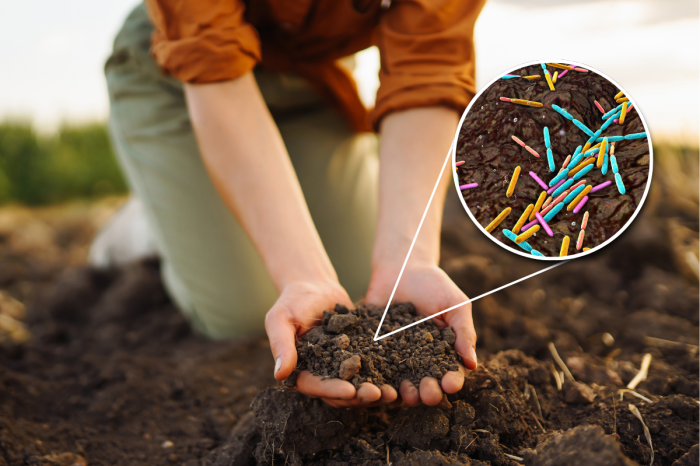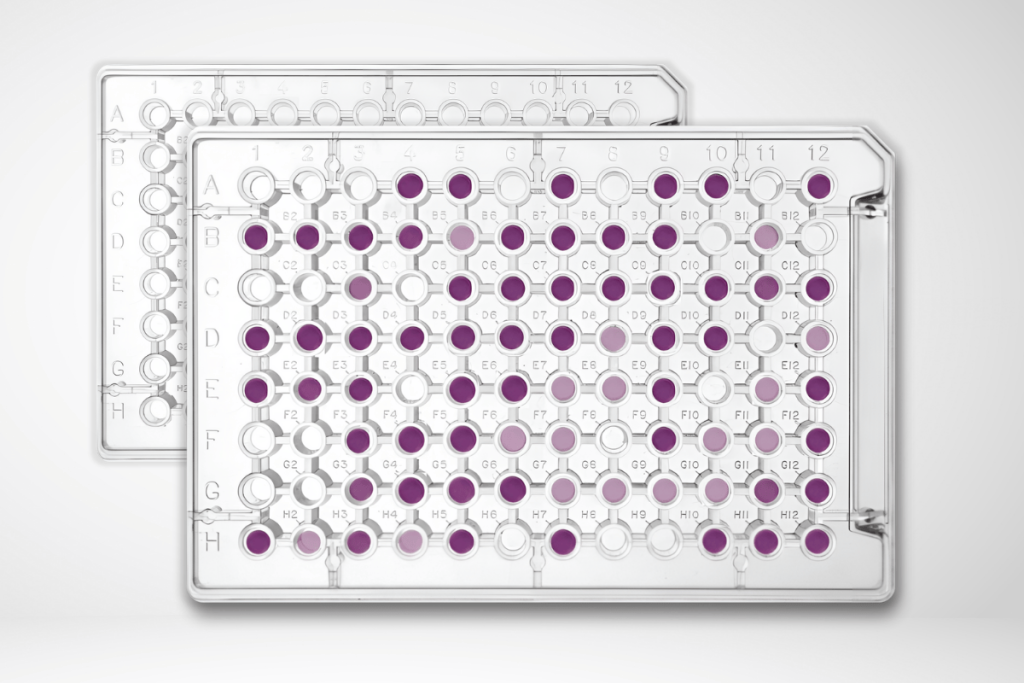Microbial products are becoming more popular in agriculture as tools to improve soil health, help crops grow stronger and make farming more resilient. These products contain live beneficial microbes that are meant to support important soil processes, like breaking down plant residues, making nutrients more available to plants, and helping crops cope with stress. But while the intended effects are clear on paper, demonstrating their impact in real field conditions remains a challenge.
In this article, we’ll look at the promise behind microbial products, why they don’t always work as expected, and how BIOTREX Soil Microbial Analysis – based on the CLPP approach – lets us see how microbial inoculants influence actual microbial function in the soil. If you’ve ever wondered what happens to microbial inoculants after they’re applied, or how to prove their impact in real field conditions, this article will give you the answers.
Microbial Products: What They’re Meant to Do
Microbial products (sometimes called microbial inoculants or microbial biostimulants) are formulations that contain live microorganisms – most often bacteria or fungi – that are applied to soil or seeds to improve soil health and quality of crops. The way they work is different, but most of them are made to support fundamental soil functions like:
- Decomposition – helping break down plant residues after harvest, returning nutrients to the soil
- Nitrogen cycling – supporting biological nitrogen fixation and mineralization to improve nitrogen availability
- Phosphorus mobilization – unlocking phosphorus that is otherwise bound in the soil and unavailable to plants
- Root development and nutrient uptake – enhancing root growth to improve access to water and nutrients
- Stress resilience – increasing crop tolerance to challenging conditions such as drought, salinity, or poor soil structure
The most commonly used microbes in agricultural products include Azospirillum, Bradyrhizobium, Azotobacter, Bacillus, Pseudomonas, Trichoderma and arbuscular mycorrhizal fungi.
Bacillus and Trichoderma species contribute to the decomposition of plant residues by producing enzymes that break down organic matter. Azospirillum, Bradyrhizobium, and Azotobacter are involved in biological nitrogen fixation, helping convert atmospheric nitrogen into forms plants can absorb. Meanwhile, Pseudomonas species help mobilize phosphorus, and mycorrhizal fungi improve nutrient and water uptake through their symbiotic relationship with plant roots.
The functions provided by these microbes are well-documented in scientific literature and form the basis for their use in agricultural inputs. In principle, they are intended to enhance beneficial soil processes – but for that to happen, a chain of events must take place in the soil.
From Application to Action: What Needs to Happen in the Soil
For microbial products to deliver their function, a series of steps must take place in the soil after application. Here’s what needs to happen:
- Survival: The introduced microbes must withstand the application process and survive initial contact with the soil environment.
- Adaptation: They need to adjust to local conditions, which may differ significantly from those in the lab or production facility.
- Establishment: Once adapted, microbes must multiply and establish themselves in the microbial community that was already in the soil.
- Expression: Finally, they must become functionally active, interacting with the soil environment, releasing enzymes, processing nutrients, and contributing to the soil’s biological processes.
While these steps sound straightforward, achieving them in the field is far from simple. Soils are highly diverse and dynamic systems. Physical properties like texture and structure, chemical traits like pH and nutrient levels, and biological factors like competition from native microbes all influence the outcome.
Recognizing this complexity, producers of microbial products invest in advanced biotechnological research to select strains that are robust, adaptable, and capable of functioning across a wide range of agricultural settings. These microbes are often tested under varying conditions to ensure they can remain active even when soils are dry, compacted, nutrient-poor, or biologically competitive.
Still, no matter how well-designed a product is, the soil itself is an unpredictable partner. That’s why it is essential not only to apply microbial inputs, but to monitor whether they are truly performing their intended function in the field.
Why Microbial Products Don’t Always Deliver Their Function
A large study by the Science for Success team (2025) tested various microbial seed treatments on soybeans in more than 100 environments across 22 U.S. states. [1] These treatments were designed to improve plant growth, nutrient uptake, and yield.
But the results showed that none of the products consistently increased soybean yields compared to untreated seeds.
Why? The researchers gave several reasons:
- The microbes may not have survived in the soil
- Conditions may not have been right for them to thrive
- The native microbes in the soil may have outcompeted the introduced ones
This shows a key problem: even if a product contains helpful microbes, there’s no guarantee they’ll do what they’re supposed to in real soil. The majority of the current methods to assess soil biology focus only on which microbes are present, rather than what they are actually doing.
To really understand whether a microbial product is working, we need to measure the activity of soil microbes – their actual function.
A Functional Approach to Soil Microbiology
Community-Level Physiological Profiling (CLPP) is a method used to assess the metabolic activity of microbial communities. It means, it’s measuring what microbes are doing, rather than identifying which species are present.
Want to understand the basics of CLPP?
Read our introductory article to learn how Community-Level Physiological Profiling works and why it’s a powerful tool for studying microbial activity in soil.
Because it focuses on microbial activity, CLPP is especially sensitive to shifts in soil biology caused by changes in field management or condition, such as:
- Application of microbial products
- Fertilization, compost or manure addition
- Regenerative practices, such as no-till or cover cropping
- Drought, flooding, or other stress events
Originally developed and used primarily in scientific research, CLPP has been recognized for its strength in capturing microbial function, but it also comes with certain limitations that have made it less accessible for everyday use in farming or product development.
At BIOTREX, we’ve taken the scientific foundation of CLPP and adapted it to meet the needs of the agricultural industry. By refining the process and interpretation of the results, we’ve made this method more practical, repeatable, and easy to interpret – without losing scientific integrity.
Why BIOTREX is a Good Tool for Microbial Products Evaluation
To properly evaluate microbial products, you need to do more than observing crop yield or checking for microbial presence – it requires understanding whether the product is actually triggering the desired biological activity in the soil. That’s where BIOTREX stands out. By using the CLPP approach, BIOTREX captures how the soil microbial community responds functionally to the introduction of a microbial product. It reflects the true response of microbial community under real field conditions, not just in controlled trials.
This makes BIOTREX especially useful for biostimulant producers, who need reliable data to optimise and validate formulations, and demonstrate product impact in diverse field environments. It helps bridge the gap between research and field reality – making biological effects measurable, comparable, and more transparent to both internal teams and external partners.
If you’re looking to strengthen the field validation of your microbial product or better understand its effects on soil biology, get in touch with our team to discuss how BIOTREX can support your next trial or evaluation.
Sources and further reading:
[1] Science for Success (2025). Biological Seed Treatments on Soybeans. United Soybean Board. https://soybeanscienceforsuccess.org/research-projects/
Ready to explore how BIOTREX can support your goals?
Book a free call with our experts and discover the impact microbial data can have on your business.


